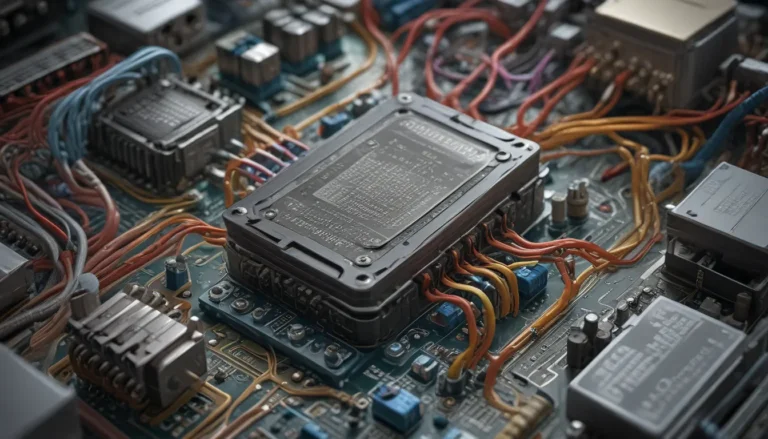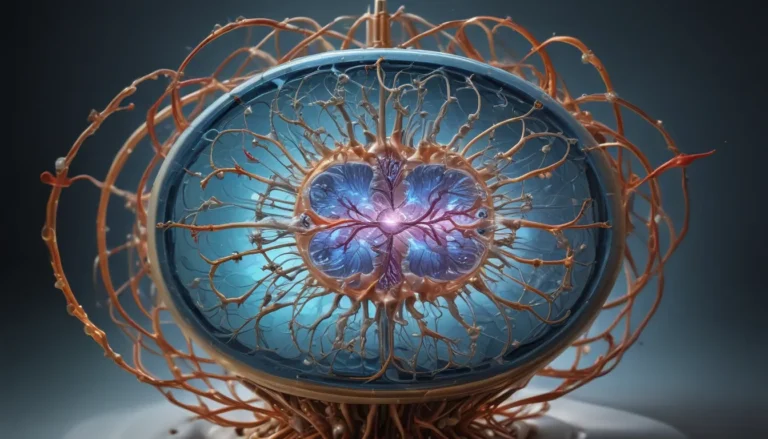A Note About Images: The images used in our articles are for illustration purposes only and may not exactly match the content. They are meant to engage readers, but the text should be relied upon for accurate information.
Welcome to the captivating realm of Pascal’s Principle of Pressure Transmission! Invented by the brilliant French mathematician and physicist, Blaise Pascal, in the 17th century, this fundamental principle revolutionized our understanding of pressure transmission in fluids. Let’s embark on an exhilarating journey through the world of Pascal’s Principle and explore the fascinating facts that will leave you in awe of this mesmerizing concept.
Understanding Pascal’s Principle
Named after the renowned Blaise Pascal, Pascal’s Principle states that when pressure is applied to a fluid in a confined space, it gets transmitted equally in all directions throughout the fluid. This principle forms the foundation of many hydraulic systems and devices that we use in our daily lives. From hydraulic brakes in cars to dental chairs, Pascal’s Principle plays a crucial role in making these systems efficient and reliable.
Key Concepts of Pascal’s Principle
- Pascal’s Principle revolutionized the field of fluid mechanics, allowing for the efficient transmission of pressure in hydraulic systems.
- The principle is based on the concept of equilibrium, where a fluid in equilibrium must have equal pressure at all points within it.
- Pressure transmission occurs in both liquid and gas systems, making the principle applicable in various scenarios.
Practical Applications of Pascal’s Principle
Hydraulic Systems:
- Hydraulic systems rely on Pascal’s Principle to transmit pressure from one point to another, allowing for the multiplication of force in systems like car brakes and lifts.
- Hydraulic presses utilize Pascal’s Principle to exert a tremendous force on objects, enabling precise shaping and compression of materials.
Engineering:
- Engineers heavily rely on Pascal’s Principle to design and analyze various structures and systems, predicting fluid behavior under different pressures.
- The principle enables the creation of mechanical advantages in systems where a small input force can generate a larger output force.
Everyday Applications of Pascal’s Principle
- Pascal’s Principle is evident in the operation of dental chairs, where hydraulic systems adjust the height and angle for easy access and comfort.
- Deep-sea exploration vehicles rely on Pascal’s Principle to withstand immense pressure at great depths, ensuring the safety of occupants and equipment.
- Hydraulic braking systems in vehicles utilize Pascal’s Principle to transmit foot pressure from the brake pedal to activate the braking mechanism efficiently.
The Impact of Pascal’s Principle
Pascal’s Principle plays a crucial role in various fields, including engineering, aerodynamics, and medical technology. By understanding how pressure is transmitted in fluids, scientists and engineers can develop innovative technologies and systems that enhance efficiency and safety. From hydraulic lifts to medical devices like blood pressure monitors, Pascal’s Principle continues to shape our everyday lives in profound ways.
Conclusion: Embracing the Power of Pascal’s Principle
In conclusion, Pascal’s Principle of pressure transmission unlocks a world of possibilities and applications that shape our modern world. By harnessing the power of fluids and understanding the principles behind pressure transmission, we can create efficient and reliable systems that drive technological advancements in various industries. Dive deeper into the fascinating realm of Pascal’s Principle and discover the incredible capabilities of fluid dynamics that continue to inspire innovation and ingenuity.
FAQs
Q: What is Pascal’s Principle?
A: Pascal’s Principle states that when pressure is applied to a fluid in a confined space, it is transmitted equally in all directions within the fluid.
Q: How does Pascal’s Principle apply to hydraulic systems?
A: In hydraulic systems, Pascal’s Principle allows for the multiplication of force by transmitting pressure from a small input area to a larger output area, enabling the lifting of heavy objects with ease.
Q: What are some practical applications of Pascal’s Principle?
A: Pascal’s Principle is applied in industries such as automotive braking systems, hydraulic lifts, scuba diving equipment, and medical devices like blood pressure monitors.
Q: Why is understanding Pascal’s Principle important?
A: Understanding Pascal’s Principle allows engineers and scientists to design efficient and reliable systems, leading to advancements in technology, transportation, and healthcare.
Q: Can Pascal’s Principle be applied to gases?
A: Pascal’s Principle primarily applies to incompressible fluids like liquids but can also explain some phenomena in compressible fluids such as gases.
Explore the wonders of Pascal’s Principle and unravel the mysteries of pressure transmission in fluids. Join us on this enlightening journey through the captivating world of physics and discover the profound impact of this fundamental principle on our everyday lives.






